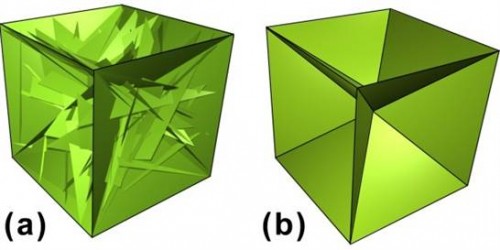
Credit: Jeffrey Grossman et al.: In these computer simulated images of 3-D solar panels the one on the left has 64 flat, triangular, double-sided panels, the one on the right is a simplified version.
This is an interesting article from MSNBC and Tech News Daily about how biomimicry can show how to capture the most solar energy per unit area. By creating the right folded shape, residual light that reflects unused from the first surface is captured by secondary surfaces. MIT has created the prefect fold combinations by running “genetic algorithm” on simple shapes. These complex clusters could provide nearly three times the output energy of a flat panel given the same efficiencies of the panel material.
Related Posts
1 Comment
Add comment Cancel reply
This site uses Akismet to reduce spam. Learn how your comment data is processed.

[…] expanded research out of MIT (PDF link) that adds serious weight to the idea that if you install a 3D photovoltaic surface, the increased energy that is generated (when compared to a non-tracking well-oriented flat panel) […]